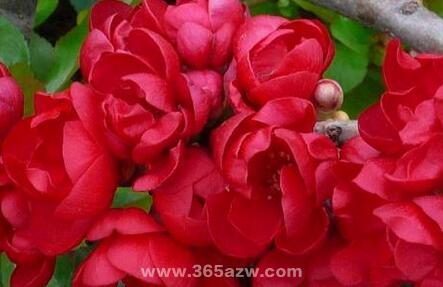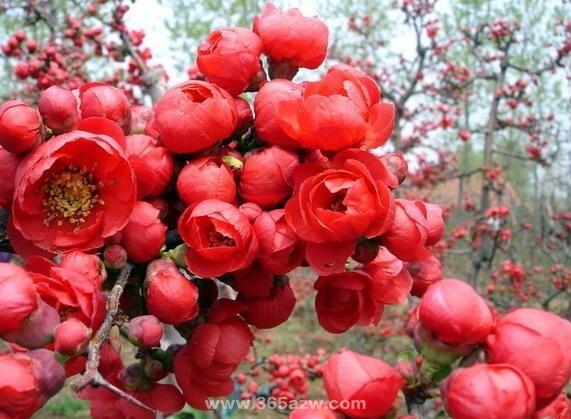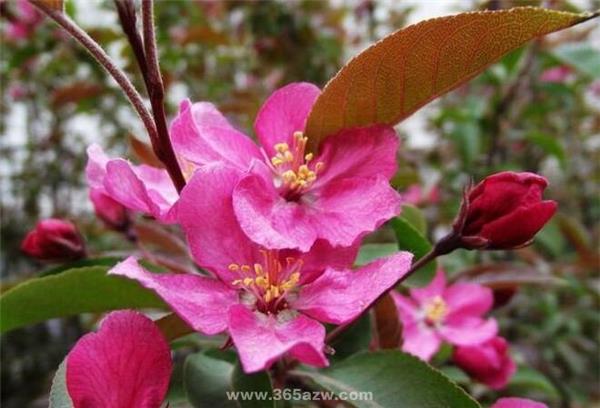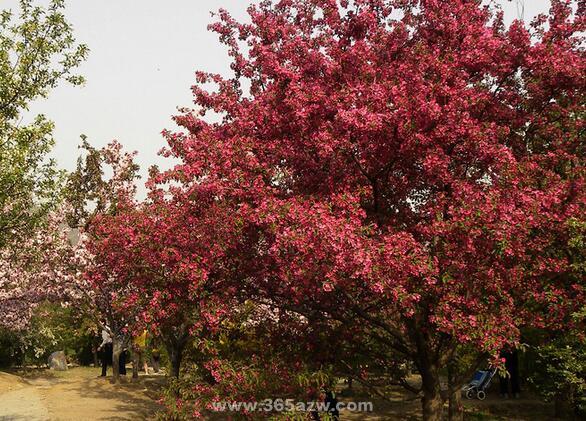Introduction of Ruby Begonia Culture Method
Ruby crabapple is a common deciduous tree plant, which is mostly planted as a landscaping plant. What problems should be paid attention to in the cultivation of ruby begonia? Next, I will introduce it to you in detail.

Red ruby crabapple is a deciduous shrub or small tree, which is a green and colorful tree species with leaves, flowers, fruits, branches and trees. This tree species has become a precious color tree species for urban greening in China because of its beautiful tree shape and rich and colorful ornamental effect.
Characteristics of red ruby Begonia
Ruby crabapple is widely used in gardens, tourist parks and other places, mainly plays a role in beautifying the environment, its whole body red color into a landscape, the ornamental effect is excellent. In addition, Ruby Begonia has outstanding characteristics, and it is an excellent variety of colorful leaves in the city.
1. Good sense of color
During the whole growth period, the red crabapple showed a red state, and the red level was distinct. Its new buds are blood red, branches are bright red, leaves are fuchsia, fruits are fuchsia, and flowers are pink. The whole plant has a good sense of color and bright wax.
2. Strong adaptability
Red ruby crabapple has strong adaptability and can grow well in barren soil; it can grow vigorously under pH 8.5; it is also hardy and easy to prune and shape.
3. Reproduction is easy
Ruby crabapple is generally propagated by sowing and grafting, and the grafting time is random, either in spring, summer or autumn.
4. Planting is simple.

Red ruby begonia has strong adaptability, and there are no great requirements for soil, moisture, sunlight, fertilizer, temperature and so on. Generally speaking, as long as it is planted in the soil and handed over some water, it can survive.
Cultivation methods of Ruby Begonia
Ruby also has general ground planting, can also be potted to make bonsai, spring planting, because avoid water stains, should be planted in slightly higher terrain is not easy to stagnant water, sunny place. The soil is neutral and partial, and the pH value is not less than 7. Quality requirements are loose, but not too fertile, too fertile can easily lead to futile growth, reduced flowering. Planting holes should be determined according to the size of the root system, not too deep and too large, so that it is better to stretch the root system. The planting depth should be 10% water from the ground. You'd better plant it with a mass of soil.
Ruby crabapple is suitable to grow in the environment with sufficient light, but it grows badly in the shade environment. If potted, the growing season should be placed in a place with plenty of light. In winter, it will not suffer frost damage under the condition of-15 ℃ low temperature, so it can live in the open field outdoors. However, in the unusually cold winter, it is necessary to take cold prevention measures.
Watering and fertilizing

The cultivation of red crabapple is carried out by watering combined with fertilization. big fertilizer should be applied once every autumn after defoliation to supplement the nutrients consumed by flowers and fruits, and it is better to apply rotten organic fertilizer. At the same time, combined with winter irrigation. Before the spring bud shade moves, the organic fertilizer is applied once, and watered once. The method of fertilization varies with the age of trees in autumn and winter, young trees apply fertilizer by picking and panning in rings, within 100 meters from the roots of trees, older trees dig and fertilize radially, weeds are removed in the combination of aged trees, organic fertilizer is applied under the crown, and fertilizer is turned into the ground for 30 years after application, and phosphorus and potassium fertilizer is applied twice after flower fade to ensure a certain fruit setting rate. At the same time, pay attention to watering.
Shaping and pruning
The buds of red stone begonia are mostly differentiated from the terminal buds, and the medium and short fruit branches are the main flower branches, so the medium and short fruit branches should be retained. The long branches should be cut short, at the same time, the dense branches, dry and withered branches, disease and insect branches should be cut off, and then pruned according to the desired tree shape. If you want to make the crown perfect, then dense and sparse, cut off the dense branches, and cut down the sparse parts of the branches, so as to make it more side branches, simple and vacant.
Matters needing attention in the cultivation of Ruby Begonia
1. After planting, the ruby crabapple should make a water retaining ring with a height of about 20 centimeters on the outer edge of the planting hole and water it.
2. The water must be poured enough at once so that it will no longer seep down immediately. After watering, the soil sinks and must be treated with soil. When there is no need for frequent watering, remove the water retaining ring and cultivate the soil in the rhizosphere of the red crabapple plant.

3. If the seedlings of Ruby Begonia are planted and transported to the site, if the seedlings cannot be finished on the same day, the roots must be covered. If the value cannot be set for a while, the soil ball can be planted upright, and the binding of the soil ball can not be solved. Unless the weather is dry, there is usually no need to water.
That's all for today's introduction of Ruby Begonia. I hope you can enjoy the content of today's article.
I hope you will enjoy the content of the article shared today.
Related
- Wuhan Hospital Iron Tree Blooming Result Was Instantly Frightened by the Gardener Master
- Which variety of camellia is the most fragrant and best? Which one do you like best?
- What is the small blue coat, the breeding methods and matters needing attention of the succulent plant
- Dormancy time and maintenance management of succulent plants during dormancy
- Minas succulent how to raise, Minas succulent plant pictures
- What are the varieties of winter succulent plants
- How to raise succulent plants in twelve rolls? let's take a look at some experience of breeding twelve rolls.
- Attention should be paid to water control for succulent plants during dormant period (winter and summer)
- Watering experience of twelve rolls of succulent plants
- Techniques for fertilizing succulent plants. An article will let you know how to fertilize succulent plants.



